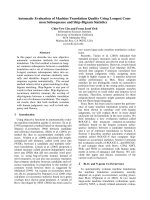Báo cáo khoa học: "Late-season fertilization of Picea mariana seedlings under greenhouse culture: biomass and nutrient dynamic" doc
Bạn đang xem bản rút gọn của tài liệu. Xem và tải ngay bản đầy đủ của tài liệu tại đây (330.38 KB, 10 trang )
J.R. Boivin et al.Late fertilization of Picea mariana seedlings
Original article
Late-season fertilization of Picea mariana
seedlings under greenhouse culture:
biomass and nutrient dynamics
Joseph R. Boivin, Brad D. Miller and Vic R. Timmer
*
Faculty of Forestry, University of Toronto, 33 Willcocks Street, Toronto, Ontario, Canada
(Received 27 March 2001; accepted 9 October 2001)
Abstract – Conventional nursery culture of containerized black spruce (Picea mariana Mill. B.S.P.) seedlings usually involves a late-
season interval, commonly called the “hardening period”, whenfertilizationand water are withheld to promote frost-hardiness. Conside-
rable growth may occur during this time which may lead to internal nutrient dilution, a condition often detrimental to subsequent field
performance. Continued late season fertilization (at 6 or 12 mg N seedling
–1
) of seedlings during the hardening period was tested as a
technique to prevent late season nutrient dilution and possibly to increase nutrient reserves. Root growth was increased much more than
shoot growth during this period. Late-season fertilization raised N, P and K uptake as much as 164, 70 and 32% respectively, compared
to conventionally fertilized seedlings with no late-season fertilization. Depending on dose rate and pre-hardening nutrient loading, this
technique demonstrates the potential to build internal nutrient reserves in seedlings. Nutrient dilution was temporarily averted by late-
season fertilization suggesting that intensive and prolonged nutrient supplementation during the hardening period may further delay or
eliminate nutrient dilution in seedlings.
black spruce / hardening period / nitrogen / nutrient dilution / nutrient loading
Résumé – Fertilisation en fin de saison des plants de Picea mariana cultivés en serre : dynamique de la biomasse et des éléments
nutritifs. Dans les pépinières, l’élevage en container de plants de Picea mariana (Mill. B.S.P.) comporte normalement en fin de saison
une phase appelée « période d’endurcissement » pendant laquelle fertilisation et arrosage sont supprimés pour améliorer la résistance au
froid. La croissance, au cours de cette période, peut être importante d’où une dilution interne des éléments nutritifs affectant souvent les
performances ultérieures sur le terrain. On a testé une technique consistant à prolonger la fertilisation pendant la période d’endurcisse-
ment (6 à 12 mg N par plant) pour éviter, en fin d’élevage, une dilution des éléments nutritifs, voire en augmenter la teneur. Pendant cette
période, le gain de croissance du système racinaire a été plus élevé que celui des parties aériennes. Cette fertilisation en fin de saison se
traduit par un prélèvement en N, P et K accru de respectivement 164, 70 et 32 % par rapport à celui observé avec le régime de fertilisation
classique. Dépendant du régime de fertilité antérieur avant endurcissement et de la dose d’éléments nutritifs adoptée, cette technique dé-
montre qu’il est possible d’agir sur la quantité de réserves en éléments des plants. Une fertilisation en fin de saison interrompt temporai-
rement le processus de dilution des éléments. Ceci permet de penser que l’apport intensif et prolongé d’éléments pendant la période
d’endurcissement peut retarder ou éviter la dilution en éléments des plants.
Picea mariana / période d’endurcissement / azote / dilution des éléments nutritifs / changements nutritifs
Ann. For. Sci. 59 (2002) 255–264
255
© INRA, EDP Sciences, 2002
DOI: 10.1051/forest:2002021
* Correspondence and reprints
Tel. + 416 978 6774; Fax. +416 978 3834; e-mail:
1. INTRODUCTION
Commercial greenhouse production of containerized
conifer seedlings usually involves a late-season harden-
ing period imposed to improve drought and frost toler-
ance during winter storage and subsequent outplanting
[1, 11]. Once seedlings reach a target height during
greenhouse culture, apical bud initiation is induced artifi-
cially by shortening daily photoperiod [9, 12] resulting in
budset in about two weeks for black spruce (Picea
mariana Mill. B.S.P.) [8]. The hardening period is de-
fined as the time interval following apical bud initiation
(bud-set) when roots and shoots acquire frost hardiness
[9]. Irrigation and fertilization are generally reduced to
induce nutritional and environmental stress thus promot-
ing frost hardiness development in seedlings [5, 28].
However, substantial growth, particularly in the roots,
occurs during hardening despite stress induction [33, 36].
Black spruce seedlings may gain as much as 142% in
shoot dry mass and 794% in root dry mass during harden-
ing [33]. Since nutrient uptake is limited without contin-
ued fertilization, growth of this magnitude can severely
dilute plant nutrient reserves, compromising nutrient
loading efforts [2, 33].
Nutrient loading, or extra-high fertilization that builds
up internal nutrient reserves during nursery culture, has
been shown to improve outplanting performance of
overwintered seedlings both in the field [30, 32, 42] and
in pot trials [34, 46] as the stored nutrients are
retranslocated to growing apices during the initial flush
of shoot expansion after transplanting when new root
growth is restricted [41]. Nutrient loading before harden-
ing may counter late-season dilution [39], although some
growers are reluctant to adopt this practice because of
concerns that high N fertilization may jeopardize frost-
hardiness development in seedlings prior to winter stor-
age [2, 17, 43]. More recent studies, however, have
shown that high N supply does not affect cold tolerance
of conifers [4] and may actually increase frost-hardiness
[7, 14, 16, 27, 35]. Presumably autumnal accumulation of
free amino acids and proteins may lessen cellular freez-
ing damage by reducing the symplastic water volume [3,
26, 38]. Beside increasing plant nutrient reserves, nutri-
ent loading may also build up nutrients in the growing
medium that seedlings can draw on during hardening
hence reducing later nutrient dilution. Although plant
nutrient status was increased during hardening and nutri-
ent dilution was delayed, this carry-over effect from
loading was temporary because of subsequent leaching
and inadequate nutrient release from the peat rooting me-
dium [33].
Compared to pre-hardening nutrient loading, late-sea-
son fertilization may be more effective in overcoming
late-season nutrient dilution in seedlings because nutri-
ent supplementation is extended or prolonged into the
hardening period [4, 35]. Ideally fertilizer additions dur-
ing this period should continue to match growth and
nutrient demand rates of seedlings to maintain stable tis-
sue nutrient concentrations, thus preserving desirable
steady-state nutrition [22, 23]. Steady-state nutrition is
usually achieved by exponentially increasing fertiliza-
tion during the exponential growth phase of seedlings
[19, 39]. Following bud-set, however, black spruce seed-
lings usually exhibit a gradual decline in growth rate and
physiological activity until dormancy requirements are
met [1, 10, 29]. Consequently, nutrient supplementation
during hardening should match this decline pattern [25]
by following a reverse exponential function that synchro-
nizes nutrient supply rate with growth rate. The objective
of this study was to test late-season fertilization regimes
on a commercial crop of black spruce seedlings utilizing
declining delivery rates. The expectation was that, de-
pending on application level, late-season fertilization
would build up nutrient reserves in the seedlings to coun-
ter and delay nutrient dilution.
2. MATERIALS AND METHODS
2.1. Plant material and main fertilization regimes
Black spruce seedlings were grown in a greenhouse at
a commercial forest tree nursery (North Gro Develop-
ment Ltd.) near Kirkland Lake, Ontario (48
o
10’ N,
88
o
01’ W), as detailed in Miller and Timmer [33]. The
treatment and cultural schedule is outlined in table I.
Each seed was planted in late April into a peat-filled cav-
ity (40 cm
3
) of Styroblock trays containing 330 cavities
tray
–1
. Seedlings grew under natural daylength with day:
night temperatures averaging 22:15 ºC, respectively.
Weekly application of fertilizer solutions commenced
one week following germination and was carried out for
15 weeks. The application frequency was predominantly
controlled by exterior temperature and humidity (which
impacted watering frequency) and was occasionally
delayed to permit adequate crop dry-down, thus avoiding
fertilizer loss due to leaching. Four main fertility
regimes, providing cumulative totals of 14.7, 41.2, 38.7,
and 57.6 mg N seedling
–1
, were applied during the first
16 weeks of growth (table I). These regimes are
hereafter respectively referred to as conventional (C),
256 J.R. Boivin et al.
conventional loading (CL), exponential loading (EL),
and high-dose exponential loading (HEL). The conven-
tional regime (C) simulated standard industry practice
for pre-hardening nutrient delivery in northern Ontario
[33]. The loading (CL and EL) regimes and high loading
(HEL) regime represented two moderate and a high nu-
trient loading level, respectively. Conventional loading
and exponential loading (CL and EL) delivered about the
same cumulative total of nutrients, at either constant or
exponentially increasing rates. The high exponential
loading (HEL) treatment delivered the most nutrients and
was designed to build nutrient reserves for the initial 16
weeks as described in [40]. A commercial water soluble
fertilizer (Plant Products 20-20-20, containing 20% N,
9% P, and 17% K plus micronutrients) was sprayed on to
the seedlings as a pre-mixed solution using traveling
booms with fixed nozzles. Seedlings were rinsed after
each application to dilute the fertilizer and avoid fertil-
izer burn.
A two-week shortday treatment commenced 14 weeks
after germination (table I) by reducing photoperiod from
natural day-length to 8 h using blackout curtains. Seed-
lings were hardened for 15 weeks after shortday treat-
ment by return to natural day-length and gradual
reduction of greenhouse temperatures (18–10:12–4 ºC
day:night) before transfer to a cold storage facility
(–2 ºC).
2.2. Late-season fertilization, experimental design
and statistical analysis
After shortday exposure, late-season fertilization was
evaluated on a subsample of nine randomly selected
seedling trays from each unreplicated main fertilization
regime (C, CL, EL, and HEL). Each set of nine trays
(holding 330 trees per tray) was arranged in a completely
randomized design with three replicates testing three
late-season treatments: an unfertilized control (U), an ex-
tended fertilization (XF) treatment that provided a cumu-
lative total of 6 mg N seedling
–1
, and an extended loading
(XL) treatment that provided a cumulative total of 12 mg
N seedling
–1
(figure 1). The control represented standard
practice of periodic irrigation without fertilization during
hardening. Extended fertilization (XF) was expected to
maintain steady-state nutrition, the dose rate reflecting N
content differences (4–6 mg N) usually found between
conventional and nutrient loaded seedlings [40]. The
12 mg N seedling
–1
extended loading (XL) treatment was
intended to increase N concentration, thus building nutri-
ent reserves during hardening. Weekly additions of pre-
mixed fertilizer solutions declined exponentially with
time (figure 1), starting one week after termination of
shortday treatment (week 18, table I) and continuing for
six weeks using the same application procedure as be-
fore. Final harvest treatment responses within each main
fertilization regime were tested by one-way analysis of
variance for a completely randomized design of three
treatments and three replications using SAS Institute Inc.
Late fertilization of Picea mariana seedlings 257
Table I. Treatment schedule of containerized black spruce seed-
lings during greenhouse culture. The four main fertilization re-
gimes: conventional (C), conventional loading (CL), exponential
loading (EL), and high exponential loading (HEL) supplied cu-
mulative totals of 14.7, 41.2, 38.7, and 57.6 mg N seedling
–1
.
Late-season fertilization supplied 0 (U), 6 (XF) and 12 (XL) mg
N seedling
–1
as in figure 1.
Week Cultural phase Treatment
0 – 1 Germination Water only
1 – 16 Exponential growth Main fertilization
(C, CL, EL, or HEL)
15 – 17 Bud set Short day
18 – 23 Hardening Late-season fertilization
(U, XF, or XL)
23 – 32 Hardening Water only
32 + Cold-storage
R
2
= 0,93
R
2
= 0,93
-1
0
1
2
3
4
5
01234567
Weeks after germination
U
XF
XL
Weekly N applied (mg/seedling)
Figure 1. Late-season fertilization regimes applied during the
first six weeks of the hardening period (week 18–32). Unfertil-
ized control (U), extended fertilization (XF), and extended load-
ing (XL) supplied cumulative totals of 0, 6, and 12 mg N
seedling
–1
, respectively, at exponentially declining rates.
[37] procedures. Means separation was by Tukey’s HSD
test (p < 0.05).
2.3. Sampling and vector diagnosis
Ten seedlings per treatment-replicate were randomly
sampled at week 18, 20, 22, 24, 26, 28, and 32 during
hardening. Growing media was washed from roots and
shoot lengths were recorded. Seedlings were rinsed in
distilled water, separated at the root collar, composited
by treatment-replicate, dried in an oven at 70 ºC for
48 hours, and weighed. Chemical analysis was then con-
ducted according to methods described in Timmer and
Armstrong [41]. Vector diagnosis [20] was used to exam-
ine temporal changes in growth and nutrient status during
the hardening period as demonstrated with N using se-
quential sampling data. Treatment responses were por-
trayed as vectors that reflect changes in seedling dry
mass, N content, and N concentration, progressively with
time relative to the initial sampling event (week 18, be-
fore late-season fertilization). Three diagnostic trends
were apparent: nutrient dilution, steady-state nutrition,
or a deficiency associated nutrient accumulation, de-
picted respectively as Shift A, B,orC (figure 1, in [20]).
Nutrient dilution (Shift A) depicted as a downward slop-
ing vector was characterized by increased dry mass and
nutrient uptake but decreased nutrient concentration. A
right pointing vector with no slope signified steady-state
nutrition (Shift B) reflecting increased dry mass and nu-
trient uptake with no change in nutrient concentration.
An accumulation of nutrient reserves over time defined
by an upward sloping vector (Shift C) represented in-
creased dry mass, nutrient uptake, and nutrient concen-
tration [20].
3. RESULTS AND DISCUSSION
3.1. Growth and biomass partitioning
At final harvest (tables II and III), late-season fertil-
ization significantly influenced total biomass production
258 J.R. Boivin et al.
Table II. Means of seedling dry mass (mg), shoot root ratio, and seedling N, P, and K concentration (% d.w.), and N/K ratio before
(week 18) and after (week 32) late season fertilization. The four main fertilization regimes: conventional (C), conventional loading
(CL), exponential loading (EL),and high exponential loading (HEL) supplied cumulative totals of 14.7, 41.2, 38.7, and 57.6 mg N seed-
ling
–1
. Late-season fertilization treatment abbreviations as in figure 1.
Main fertiliza-
tion regime
Before or after late-
season fertilization
Total dry
mass
1
Shoot/root
ratio
Seedling nutrient concentration
K/N ratio
NPK
C Before 220.73 2.78 2.04 0.37 0.98 0.48
After (U) 654.40a 0.97c 1.36c 0.27b 0.68a 0.51a
After (XF) 601.43a 1.09b 1.74b 0.37a 0.68a 0.39a
After (XL) 599.70a 1.21a 2.62a 0.38a 0.58b 0.22b
CL Before 286.87 5.20 2.54 0.37 1.18 0.46
After (U) 904.77a 1.42b 1.35c 0.26c 0.70a 0.52a
After (XF) 805.57a 1.36b 1.72ba 0.34b 0.74a 0.43b
After (XL) 789.97a 1.77a 2.10a 0.37a 0.66a 0.31c
EL Before 318.30 5.37 2.62 0.35 1.10 0.42
After (U) 957.73a 1.69a 1.49c 0.24b 0.68a 0.45a
After (XF) 847.63b 1.42b 2.05b 0.32a 0.65a 0.32b
After (XL) 794.80b 1.82a 2.47a 0.35a 0.64a 0.26c
HEL Before 286.03 6.82 2.91 0.36 1.13 0.39
After (U) 967.53a 1.66a 2.39b 0.30a 0.60a 0.25a
After
(XF) 807.40b 1.30b 2.27b 0.34a 0.56a 0.25a
After (XL) 809.73b 1.55ab 2.88a 0.37a 0.61a 0.21a
1
Within eachregime, late-season fertilization means (U, XF and XL) sharing a common letter are not significantly different according to Tukey’s HSD test, p< 0.05.
of exponentially loaded (EL and HEL) seedlings
(p = 0.0099–0.0292) but not the conventionally (C and
CL) treated seedlings (p = 0.3352–0.4755). Dry matter
production increased 170–200% for all treatments after
budset, exemplifying the large growth increase that can
occur during the 15 week hardening phase (tables II and
III). The pre-hardening nutrient loading regimes (CL, EL
and HEL) had little effect on subsequent root growth, but
shoot growth was stimulated (44–87%) during hardening
(figure 2). On the other hand, extended fertilization (XF)
and extended loading (XL) induced a relatively small
negative effect (13–27%) on total biomass compared to
unfertilized (U) seedlings (tables II and III), which may
be related to induced K/N imbalance in the plants as will
be discussed later.
As expected, proportionately more growth was parti-
tioned to the roots than to the shoots (figure 2) during
hardening, significantly (p = 0.0003–0.0144) lowering
shoot: root biomass ratios from an average of 5.0 to 1.4
(tables II and III). The shift in carbon allocation presum-
ably occurred because terminal bud-set induced by
shortday treatments restricted further height growth [10,
13, 33]. This practice is often used operationally to con-
trol height growth of crops once a target height has been
achieved [1]. Although height growth was restricted after
budset [33], shoot dry mass increased by 89 to 122% (fig-
ure 2) attributed mainly to thickening of the stem and cell
walls, and lignification of secondary xylem [7, 8]. The
late-season reallocation of biomass to roots may also
contribute to enhanced outplanting performance because
Late fertilization of Picea mariana seedlings 259
0
100
200
300
400
500
600
700
Fertilization regime
Before
After U
After XF
After XL
C CL EL HEL C CL EL HEL
ShootRoot
a
a
a
a
a
a
a
a
b
a
a
a
a
a
a
a
a
a
a
b
b
a
b
b
Dry mass (mg)
Figure 2. Root and shoot dry mass be-
fore and after hardening. Pre-hardening
regimes abbreviations (C, CL, EL, and
HEL) as in table II. Late-season fertil-
ization treatment abbreviations (U, XF,
andXL)asinfigure 1. Within each re-
gime, late-season fertilization means
sharing a common letter are not signifi-
cantly different according to Tukey’s
HSD test, p < 0.05.
Table III. Analysis of variance associated with table II and figures 2 and 3 testing dry mass, shoot/root ratio and plant nutrient concen-
tration and content, and K/N ratio of seedlings after late season fertilization treatments. Conventional (C), conventional loading (CL),
exponential loading (EL), and high exponential loading (HEL) regimes supplied cumulative totals of 14.7, 41.2, 38.7, and 57.6 mg N
seedling
–1
respectively, before hardening.
p >F
Source of
variation within
Dry
mass
Shoot/
root ratio
Nutrient concentration Nutrient content
K/N ratio
NPKNPK
C regime 0.4755 0.0014 0.0001 0.0001 0.0096 0.0010 0.0423 0.0770 0.0017
CL regime 0.3352 0.0001 0.0001 0.0001 0.2435 0.0360 0.0949 0.0861 0.0003
EL regime 0.0099 0.0003 0.0001 0.0001 0.5288 0.0003 0.0031 0.0003 0.0001
HEL regime 0.0292 0.0144 0.0297 0.2188 0.3102 0.0547 0.4635 0.0456 0.1280
increased root size at planting is often beneficial for sub-
sequent water and nutrient uptake [6, 24, 30].
3.2. Nutrient uptake
Nutrient content in the seedlings increased substan-
tially during hardening, and uptake was promoted further
by pre-hardening loading regimes and late-season fertil-
ization practices (figure 3). Compared with the conven-
tional unfertilized (C-U) seedlings, final N, P, and K
content was increased as much as 164, 70 and 32% (for
HEL-XL, EL-XL, and CL-XF trees, respectively) re-
flecting the high potential for building up nutrient re-
serves in tree crops by combining both types of
fertilization practices in nursery culture. Late-season fer-
tilization stimulated N and P uptake for all treatments
(p = 0.001–0.423) except for the high exponential load-
ing (HEL) treated trees (table III, figure 3) associated
with high residual nutrient pools in the growing media
before hardening [33] that sustained N and P uptake
without dilution (table II).
Comparisons between initial (week 18) and final
(week 32) N and P concentrations for all treatments indi-
cate that extended loading (XL) was generally more ef-
fective than extended fertilization (XF) in reducing
nutrient dilution, demonstrating the advantage of adopt-
ing higher application rates (more insight into the dy-
namic nature of the dilution process is given in the next
section). As anticipated, late-season fertilization (XF and
XL treatments) proved more effective in increasing seed-
ling N and P status when compared to pre-hardening low-
dose nutrient loading (CL and EL) alone (figure 3) even
though less total fertilizer was involved (figure 1). Thus
late-season nutrient supplementation shows promise as
an efficient technique to boost final nutrient status of
seedling crops.
Plant K content was consistently raised during the
hardening period, but the increase was reduced by late-
season fertilization especially at high dose rates (table II,
figure 3). Since K uptake did not keep up with N uptake,
it may well be that higher levels of ammonium (NH
4
+
)
ions in late-season fertilizers induced an inhibitory effect
on K uptake, because NH
4
+
acts as a strong uptake antag-
onist to other nutrient cations [18]. Internal K/N ratios
declined markedly (as low as 0.21) after late-season
treatment (table II) probably inhibiting biomass produc-
tion somewhat (figure 2). Ingestad [21] considered K/N
concentration ratios between 0.45–0.55 as optimum for
pine and spruce seedlings, which was achieved by most
unfertilized (U) trees during hardening (table II). The
drop noted with the highly-loaded (HEL-U) trees reflect
the carry-over effect of high prehardening fertilization in
the rooting medium [33]. Induced K deficiency was re-
ported with other conifer seedlings exposed to high N
supplementation [15, 45] and has been countered by
increased K supplementation [44]. A similar approach to
avoid internal K/N imbalance may be needed for
intensive late-season fertilization with black spruce
seedlings.
260 J.R. Boivin et al.
0
5
10
15
20
25
30
C CL EL HEL C CL EL HEL C CL EL HEL
Fertilization regime
0
2
4
6
8
10
Before
After U
After XF
After XL
NKP
b
b
a
a
a
a
a
a
a
b
a
a
a
a
a
b
a
a
a
b
b
a
b
c
b
a
a
a
a
a
a
a
a
c
a
b
b
b
a
N content (mg/seedling)
P & K content (mg/seedling)
Figure 3. Seedling N, P, and K content
before and after hardening. Pre-harden-
ing treatment abbreviations (C, CL, EL,
and HEL) as in table II. Late-season fer-
tilization treatment abbreviations (U,
XF,andXL)asinfigure 1. Within each
regime, late-season fertilization means
sharing a common letter are not signifi-
cantly different according to Tukey’s
HSD test, p < 0.05.
3.3. Nutrient dynamics
Vector analysis of sequential sampling data was con-
ducted to monitor temporal changes in biomass and N
status of black spruce seedlings during hardening [20,
33]. Initial status (week 18) of each late-season fertiliza-
tion treatment (U, XF, and XL) was normalized to 100,
and sequential changes in dry mass, N concentration and
N content were plotted as positive, negative or un-
changed responses relative to initial status (figures 4
and 5). Progressions in time were depicted as vectors re-
flecting the magnitude and direction of each response
shift. Three major response trends were evident during
the hardening period: nutrient dilution, steady-state nu-
trition, and nutrient deficiency reflecting respectively
Shift A,ShiftB and Shift C as described previously, and
also in [20]. These responses were strongly influenced by
both pre-hardening nutrient status and late-season fertil-
ization rates. Thus, conventional (C) seedlings exhibited
increased growth and N concentration and content
initially (Shift C) for all treatments at week 18–20
(figure 4a). This may reflect a recovery from chlorosis
after shortday treatment, observed as a darkening in nee-
dle colour [33]. Subsequently, N dilution (Shift A) char-
acterized by increased biomass and N uptake but reduced
N concentration was rapid for unfertilized (U) seedlings,
but was delayed about 2 weeks by extended fertilization
(XF), and for 6 weeks by extended loading (XL). Near
steady-state nutrition (Shift B) was achieved during the
delay, as plant growth and N uptake increased without
appreciable concentration change indicating that N up-
take matched growth (figure 4a).
Late fertilization of Picea mariana seedlings 261
50
75
100
125
150
175
50 100 150 200 250 300 350
Relative N content (initial = 100)
100 200
300
Relative dry mass (initial = 100)
C
XF
XL
U
a)
50
75
100
125
150
175
50 100 150 200 250 300 350
Relative N content (initial = 100)
CL
100
200
300
XL
XF
U
Relative dry mass (initial = 100)
b)
Relative N concentration (initial =100)Relative N concentration (initial =100)
Figure 4. Progressions of relative N concentra-
tion, N content and dry mass of seedlings sam-
pled during the hardening period. Initial
seedling status (week 18) was normalized to
100. Pre-hardening treatment abbreviations (C,
CL) as in table II. Vectors reflect sequential
growth and nutrient dynamics of seedlings at
week 18, 20, 22, 24, 26, 28 and 32. Late-season
fertilization occurred week 18 to 24, treatment
abbreviations (U, XF, XL) as in figure 1.
Unlike the conventional seedlings (C), the loaded
seedlings (CL, EL, and HEL) did not exhibit a strong ini-
tial deficiency response (Shift C in figures 4b and 5).
This was likely due to the higher nutrient status of these
trees at budset (table II). However, a similar pattern of
delayed dilution from extended fertilization (XF) and ex-
tended loading (XL) was apparent that was also pro-
longed by the higher dose rate. In general, the onset of
dilution (Shift A) occurred one week after late-season
fertilization ended reflecting the sensitivity of the seed-
lings to nutrient supplementation during this period.
These response patterns also illustrate the feasibility of
continuing and prolonging late-season fertilization appli-
cations, both to minimize dilution during the hardening
period and to build up nutrient reserves.
Under extended fertilization (XF), steady-state nutri-
tion (Shift B) was more consistently attained with the
exponentially loaded trees (EL and HEL) than with
conventional (C) and conventionally loaded (CL) trees,
presumably due to their higher initial nutrient status
(figures 4 and 5). The build up of nutrient reserves
(Shift C) was evident in the extended loading treatment
(XL), most notably in the conventional (C) trees, exem-
plifying that extended loading can effectively increase
reserves. There was no toxic accumulation of N (in-
creased concentration and content accompanied with de-
creased growth, Shift E in [20]) in response to high dose
fertilization, suggesting that even higher late-season
rates than applied in this study may be used to load seed-
lings even more successfully. We intend to pursue these
practices in further studies.
262 J.R. Boivin et al.
50
75
100
125
150
175
50 100 150 200 250 300 350
Relative N content (initial = 100)
100 200
300
XF
XL
HEL
U
Relative dry mass (initial = 100)
50
75
100
125
150
175
50 100 150 200 250 300 350
Relative N content (initial = 100)
EL
100 200
300
XL
XF
U
Relative dry mass (initial = 100)
a)
b)
Relative N concentration (initial = 100)Relative N concentration (initial = 100)
Figure 5. Progressions of relative N concentra-
tion, content, and dry mass of seedlings sampled
during the hardening period. Initial seedling sta-
tus (week 18) was normalized to 100. Pre-hard-
ening treatment abbreviations (EL, HEL) as in
table II. Vectors reflect sequential growth and
nutrient dynamics of seedlings at week 18, 20,
22, 24, 26, 28 and 32. Late-season fertilization
occurred week 18 to 24, treatment abbreviations
(U, XF, XL) as in figure 1.
4. CONCLUSIONS
The results show that fertilizer supplementation dur-
ing fall hardening promoted nutrient uptake and mini-
mized dilution of nutrients associated with traditional
hardening practices employed in containerized black
spruce seedling production. Late-season fertilization was
usually more effective in increasing plant nutrient re-
serves than low-level nutrient loading applied before
hardening. Vector analysis confirmed increased uptake
or steady-state accumulation of nutrients in seedlings for
the 6-week application interval. Nevertheless, N dilution
occurred soon after late-season nutrient additions
stopped, demonstrating the nutritional sensitivity of
these seedlings during the hardening period. Plant K up-
take was reduced to some extent when combined with
high N addition, indicating that intensified nutrient load-
ing regimes may require higher proportional K than pres-
ent treatments to maintain nutrient balance in seedlings.
Implications from these findings are that late-season nu-
trient supplementation may prevent nutrient dilution in
seedlings during the hardening-off stage, and that even
higher rates of balanced fertilizer may promote nutrient
uptake to augment internal nutrient reserves for im-
proved outplanting performance.
Acknowledgements: We are most grateful to Abe
Aidelbaum, Terry White, and the staff of North Gro
Development Ltd. for enthusiastic and dedicated support
for this study. We appreciate the assistance of Francis
Salifu with statistical analysis, and acknowledge the
helpful advice of the anonymous reviewers and the asso-
ciate editor in revising the manuscript. This research was
partially funded by the National Science and Engineering
Research Council of Canada.
REFERENCES
[1] Bigras F.J., D’Aoust A.L., Hardening and dehardening of
shoots and roots of containerized black spruce and white spruce
seedlings under short and long days, Can. J. For. Res. 22 (1992)
388–396.
[2] Bigras F.J., Gonzalez A., D’Aoust A.L., Hebert C., Frost
hardiness, bud phenology and growth of containerized Picea ma-
riana seedlings grown at three nitrogen levels and three tempera-
ture regimes, New For. 12 (1996) 243–259.
[3] Binnie S.C., Grossnickle S.C., Roberts D.R., Fall accli-
mation patterns of interior spruce seedlings and their relationship
to changes in vegetative storage proteins, Tree Physiol. 14
(1994) 1107–1120.
[4] Birchler T.M., Rose R., Haase D.L., Fall fertilization with
N and K: Effects on Douglas-Fir seedling quality and perfor-
mance, West. J. Applied For. 16 (2001) 71–79.
[5] Blake J., Zaerr J., Hee S., Controlled moisture stress to
improve cold hardiness morphology of Douglas-fir seedlings,
For. Sci. 25 (1979) 576–582.
[6] Burdett A.N., Physiological processes in plantation esta-
blishment and the development of specifications for forest plan-
ting stock, Can. J. For. Res. 20 (1990) 415–427.
[7] Calmé S., Margolis H., Bigras F.J., Influence of cultural
practices on the relationship between frost tolerance and water
content of containerized black spruce, white spruce, and jack
pine seedlings, Can. J. For. Res. 23 (1993) 503–511.
[8] Colombo S.J., Bud dormancy status, frost hardiness, sho-
ot moisture content, and readiness of black spruce container see-
dlings for frozen storage, J. Amer. Soc. Hort. Sci. 115 (1990)
302–307.
[9] Colombo S.J., Frost hardening spruce container stock for
overwintering in Ontario, New For. 13 (1997) 449–467.
[10] Colombo S.J., Glerum C., Webb D.P., Winter hardening
in first-year black spruce (Picea mariana) seedlings, Physiol.
Plant. 76 (1989) 1–9.
[11] Colombo S.J., Zhao S., Blumwald E., Frost hardiness
gradients in shoots and roots of Picea mariana seedlings, Scand.
J. For. Res. 10 (1995) 32–36.
[12] Coursolle C., Bigras F.J., Margolis H.A., Hébert C., De-
hardening and second-year growth of white spruce provenances
in response to duration of long-night treatments, Can. J. For. Res.
27 (1997) 1168–1175.
[13] D’Aoust A.L., Hubac C., Phytochrome action and frost
hardening in black spruce seedlings, Physiol. Plant. 67 (1986)
141–144.
[14] DeHayes D.H., Ingle M.A., Waite C.E., Nitrogen fertili-
zation enhances cold tolerance of red spruce seedlings, Can. J.
For. Res. 19 (1989) 1037–1043.
[15] Flaig H., Mohr H., Assimilation of nitrate and ammo-
nium by the Scots pine (Pinus sylvestris) seedling under condi-
tions of high nitrogen supply, Physiol. Plant. 84 (1992) 568–576.
[16] Gleason J.F., Duryea M., Rose R., Atkinson M., Nursery
and field fertilization of 2 + 0 ponderosa pine seedlings: the ef-
fect on morphology, physiology, and field performance, Can. J.
For. Res. 20 (1990) 1766–1722.
[17] Glerum C., Frost hardiness of coniferous seedlings: prin-
ciples and applications, in: Proceedings, Evaluating Seedling
Quality: Principles, Procedures, and Predictive Abilities of Ma-
jor Tests, 16–18 Oct. 1984, Corvallis, Oreg., Duryea M.L. (Ed.),
Forest Research Laboratory, Oregon State University, Corvallis,
1985, pp. 107–123.
[18] Hüttl R.F., Nutrient supply and fertilizer experiments in
view of N saturation, Plant and Soil. 128 (1990) 45–58.
Late fertilization of Picea mariana seedlings 263
[19] Imo M., Timmer V.R., Nitrogen uptake of mesquite see-
dlings at conventional and exponential fertilization schedules,
Soil Sci. Soc. Am. J. 56 (1992) 927–934.
[20] Imo M., Timmer V.R., Vector diagnosis of nutrient dy-
namics in mesquite seedlings, For. Sci. 43 (1997) 268–273.
[21] Ingestad T., Mineral nutrient requirements of Pinus syl-
vestris and Picea abies seedlings, Physiol. Plant. 45 (1979)
373–380.
[22] Ingestad T., Relative addition rate and external concen-
tration; Driving variables used in plant nutrition research, Plant,
Cell Environ. 5 (1982) 443–453.
[23] Ingestad T., Lund A B., Theory and technique for stea-
dy state mineral nutrition and growth of plants, Scand. J. For.
Res. 1 (1986) 439–453.
[24] Jobidon R., Charette L., Bernier P.Y., Initial size and
competing vegetation effects on water stress and growth ofPicea
mariana (Mill.) BSP seedlings planted in three different environ-
ments, For. Ecol. Manage. 103 (1998) 293–305.
[25] Jonsson A., Ericsson T., Eriksson G., Kahr M., Lundvist
K., Norell L., Interfamilly variation in nitrogen productivity of
Pinus sylvestris seedlings, Scand. J. For. Res. 12 (1997) 1–10.
[26] Kim Y.T., Glerum C., Free amino acid concentration in
red pine needles during three successive autumns, Can. J. For.
Res. 18 (1988) 1286–1290.
[27] Klein R.M., Perkins T.D., Myers H.L., Nutrient status
and winter hardiness in red spruce foliage, Can. J. For. Res. 19
(1989) 754–758.
[28] Landis T.D., Tinus R.W., McDonald S.E., Barnett J.P.,
Seedling nutrition and irrigation, Vol. 4, The Container Tree
Nursery Manual. Agric. Handbk. 674, Washington, DC: U. S.
Dept. Agric., For. Ser., 1989.
[29] Lord D., Morissette S., Allaire J., Influence de l’intensité
lumineuse, de la température nocturne de l’air et de la concentra-
tionenCO
2
sur la croissance de semis d’épinette noire (Picea
mariana) produits en récipients en serres, Can. J. For. Res. 23
(1993) 101–110.
[30] Malik V., Timmer V.R., Growth, nutrient dynamics, and
interspecific competition of nutrient-loaded black spruce see-
dlings on a boreal mixedwood site, Can. J. For. Res. 26 (1996)
1651–1659.
[31] Margolis H.A., Brand D.G., An ecophysiological basis
for understanding plantation establishment, Can. J. For. Res. 20
(1990) 375–390.
[32] McAlister J.A., Timmer V.R., Nutrient enrichment of
white spruce seedlings during nursery culture and initial planta-
tion establishment, Tree Physiol. 18 (1998) 195–202.
[33] Miller B.D., Timmer V.R., Nutrient dynamics and car-
bon partitioning in nutrient loaded Picea mariana (Mill.) B.S.P.
seedlings during hardening, Scand. J. For. Res. 12 (1997)
122–129.
[34] Quoreshi A.M., Timmer V.R., Early outplanting perfor-
mance of nutrient-loaded containerized black spruce seedlings
inoculated with Laccaria bicolor: a bioassay study, Can. J. For.
Res. 30 (2000) 744–752.
[35] Rikala R., Repo T., The effect of late summer fertiliza-
tion on the frost hardening of second-year Scots pine seedlings,
New For. 14 (1997) 33–44.
[36] Ritchie G.A., Dunlap J.R., Root growth potential: Its de-
velopment and expression in forest tree seedlings, N. Z. J. For.
Sci. 10 (1980) 218–248.
[37] SAS Institute Inc., SAS/START user’s guide. SAS Inc.
Cary, N.Y. 1998.
[38] Sagisaka S., Araki T., Amino acids in perennial plants at
the wintering stage and at the beginning of growth, Plant Cell
Physiol. 24 (1983) 479–494.
[39] Timmer V.R., Exponential nutrient loading: a new ferti-
lization technique to improve seedling performance on competi-
tive sites, New For. 13 (1997) 279–299.
[40] Timmer V.R., Aidelbaum A.S., Manual for exponential
nutrient loading of seedlings to improve outplanting perfor-
mance on competitive forest sites, Nat. Resour. Can., Canadian
Forest Service, Sault Ste. Marie, ON. NODA/NFP Tech. Rep.
TR-25. 1996.
[41] Timmer V.R., Armstrong G., Growth and nutrition of
containerized Pinus resinosa at exponentially increasing nutrient
additions, Can. J. For. Res. 17 (1987) 644–647.
[42] Timmer V.R., Munson A.D., Site-specific growth and
nutrition of planted Picea mariana in the Ontario Clay Belt. IV.
Nitrogen loading response, Can. J. For. Res. 21 (1991)
1058–1065.
[43] van den Dreissche R., Health, vigour and quality of coni-
fer seedlings in relation to nursery soil fertility, in: Proceedings,
North American Forest Tree Nursery Soils Workshop, 28 July –
1 Aug. 1980, Syracuse, NY, Abrahamson L.P., Bickelhaupt D.H.
(Eds.), College of Environmental Science and Forestry, New
York State University, Syracuse, 1980, pp. 100–120.
[44] van den Dreissche R., Ponsford D., Nitrogen induced po-
tassium deficiency in white spruce (Picea glauca) and Engleman
spruce (Picea engelmannii) seedlings, Can. J. For. Res. 25
(1995) 1445–1454.
[45] Xu X., Timmer V.R., Biomass and nutrient dynamics of
Chinese fir seedlings under conventional and exponential fertili-
zation regimes, Plant and Soil 203 (1998) 313–322.
[46] Xu X., Timmer V.R., Growth and nitrogen nutrition of
newly planted Chinese fir seedlings exposed to nutrient loading
and fertilizer addition, Plant and Soil 216 (1999) 83–91.
264 J.R. Boivin et al.


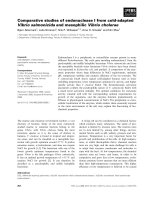
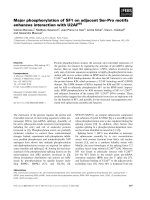
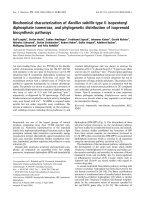
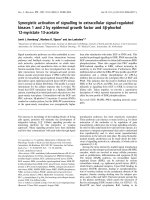

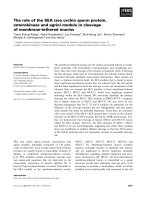
![Tài liệu Báo cáo khoa học: Specific targeting of a DNA-alkylating reagent to mitochondria Synthesis and characterization of [4-((11aS)-7-methoxy-1,2,3,11a-tetrahydro-5H-pyrrolo[2,1-c][1,4]benzodiazepin-5-on-8-oxy)butyl]-triphenylphosphonium iodide doc](https://media.store123doc.com/images/document/14/br/vp/medium_vpv1392870032.jpg)
